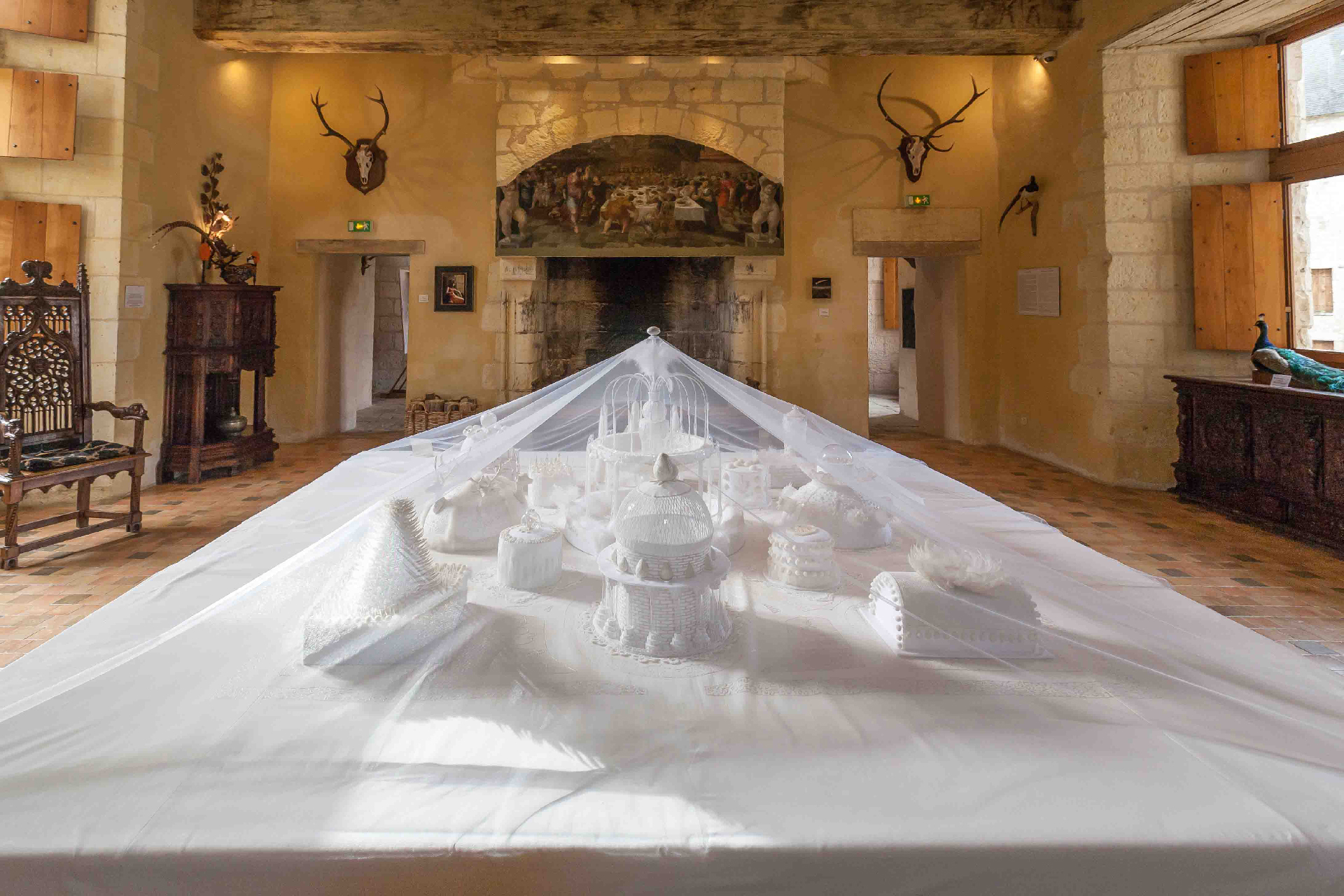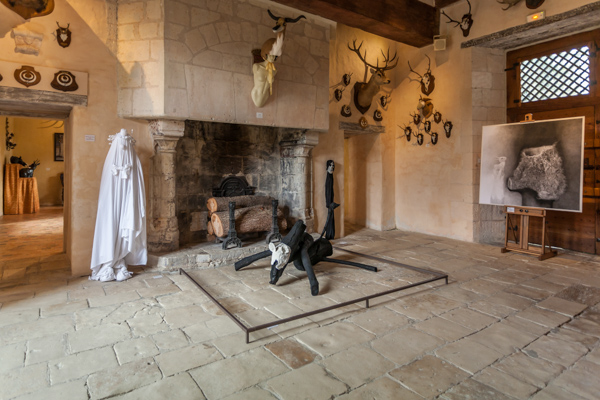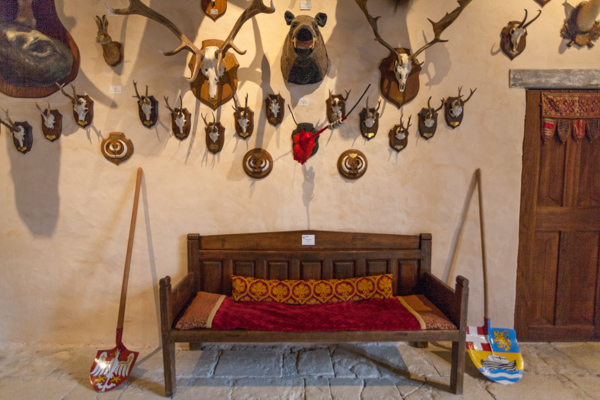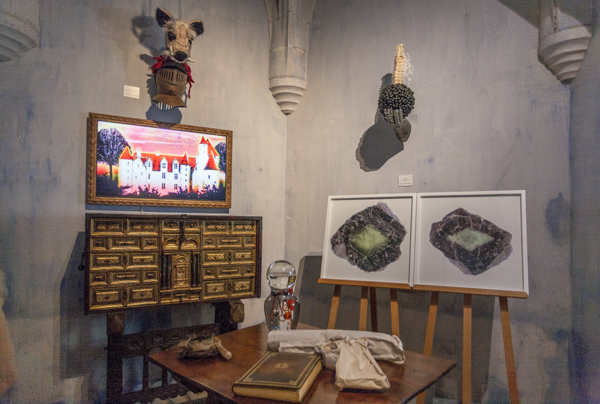Art
GHOST IN THE CASTLE
2016 ART EXHIBITION
Ghost in the castle
Inspired and artistic apparitions between the walls
« No one knows why, but ghosts love nothing more than castles », Chateaubriand
American artist Marnie Weber draws her inspiration from a mixture of carnival imagery and spiristism – a religious movement based on the idea that the spirit of the dead can communicate with the living. She is also fascinated with the feminine figure, as you can see in her sculpture Curly Ghost Clown. In the Lord of Le Rivau’s Study, the work entitled Salvatore Mundi, by artist Jan Fabre throws us back to the times of wandering ghost knights. A hand wearing a metal gauntlet seems to have come through the wall and supports a sphere covered with beetle elytras representing the earth, and topped by part of a human spine.
On the desk, Bottle of Tears by Jean-Michel Othoniel reminds us of the crystal balls of traditional fortune tellers, but also of the clever mechanisms crafted by surrealist artists to recreate ghost voices. Nathalie Rebholltz’s Nephesh puts a new spin on ghost imagery: her creatures emerging from the chimney seem rather nice and friendly – miles away from other usually scary or deathly apparition. Sometimes fear is only inside the mind: in the photographic dyptich Mare Vaporum by Ljubisa Danilovic, created with a rare technique called rotogravure, we can see a character faced with its own shadow. An image that the artist is unable to erase from her memory.
Alongside, Clara Dijan and Nicolas Leto’s spray paintings entitled Death is Certain borrow from the photogram technique to remind us that the shadows of the people we have lost continue to follow us, like an negative image of the flesh-and-blood beings we once knew. The two artists try to reconcile the living and the dead through the use of a medium evocative of the afterlife. On the small table, the white sculptures by Combey and Pion create a fantastical and strange atmosphere, not very far from the troubling contraptions of surrealist artists.




